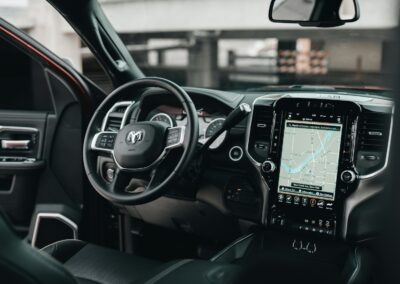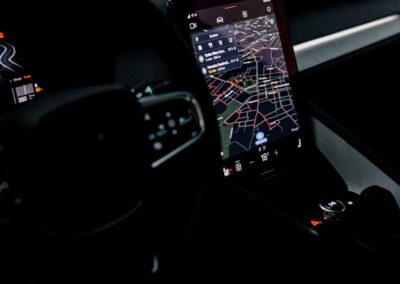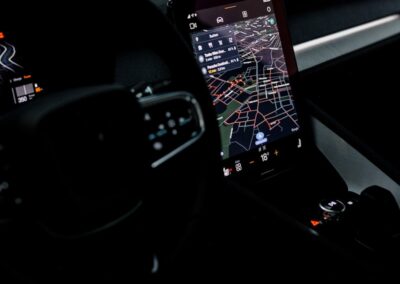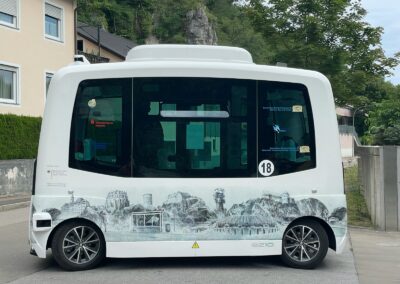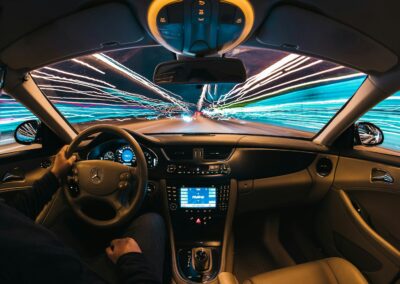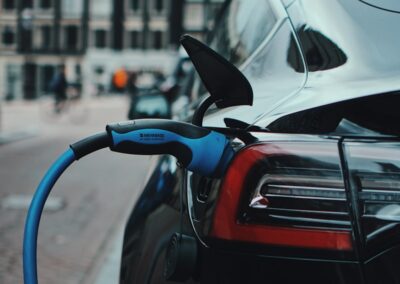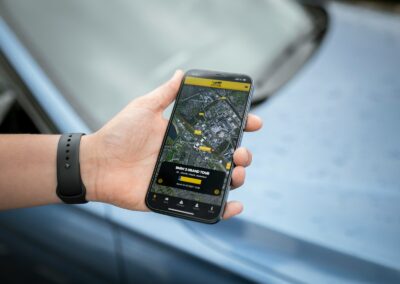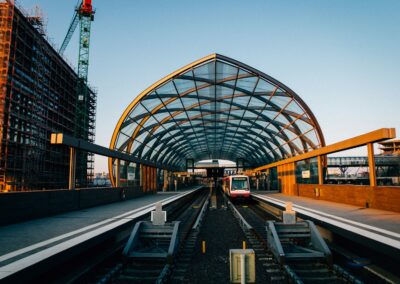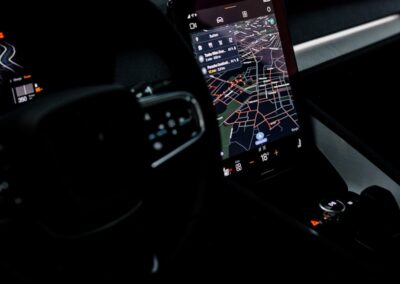The Future of Smart Transit Systems in Saudi Arabia and the UAE
Revolutionizing Public Transit Safety with V2I Communication
Advancements in vehicle-to-infrastructure (V2I) communication are revolutionizing public transportation safety, particularly in technologically progressive cities like Riyadh and Dubai. V2I communication involves the exchange of real-time data between vehicles and infrastructure, such as traffic signals, road signs, and transit management systems. This technology enhances situational awareness for both drivers and transit operators, leading to safer and more responsive public transportation systems.
In Saudi Arabia and the UAE, the adoption of V2I communication is a critical component of their smart city initiatives. These countries are leveraging Artificial Intelligence (AI) and Internet of Things (IoT) technologies to create interconnected transit networks that can anticipate and respond to potential safety hazards. For example, AI-powered systems can analyze traffic patterns and predict congestion, allowing transit agencies to adjust routes and schedules proactively. This reduces the risk of accidents and improves the overall safety of the transit system.
Moreover, V2I communication enables real-time monitoring of infrastructure conditions. Sensors embedded in roads and bridges can detect wear and tear, alerting maintenance crews to address issues before they become serious problems. This predictive maintenance approach not only enhances safety but also extends the lifespan of critical infrastructure. In cities like Riyadh and Dubai, where rapid urbanization necessitates robust and reliable transit systems, the integration of V2I technology is essential for maintaining high safety standards and ensuring the well-being of passengers.
Boosting Efficiency in Public Transportation with V2I
The efficiency of public transportation systems can be significantly enhanced through advancements in vehicle-to-infrastructure communication. By facilitating real-time data exchange between vehicles and infrastructure, V2I technology optimizes transit operations, reduces delays, and improves service reliability. This is particularly beneficial in the fast-paced urban environments of Riyadh and Dubai, where efficient public transit is crucial for supporting economic growth and reducing traffic congestion.
One of the key benefits of V2I communication is its ability to improve traffic flow and reduce transit times. Smart traffic signals, for instance, can communicate with approaching buses and adjust signal timings to prioritize transit vehicles, minimizing stops and delays. This not only improves the punctuality of public transit services but also enhances the overall passenger experience. In Saudi Arabia and the UAE, where investment in public transportation infrastructure is a priority, the implementation of V2I technology aligns with broader goals of sustainability and urban mobility.
Additionally, V2I communication supports the efficient allocation of transit resources. By providing real-time data on vehicle locations and passenger loads, transit agencies can optimize route planning and deploy additional services during peak times. This data-driven approach to resource management ensures that public transportation systems can meet the demands of growing urban populations. In cities like Riyadh and Dubai, where efficient and reliable transit services are essential for maintaining economic competitiveness, the integration of V2I technology is a strategic imperative.
Future Prospects: Integrating Advanced Technologies with V2I
The future of public transportation in Saudi Arabia and the UAE is set to be transformed by the integration of advanced technologies with vehicle-to-infrastructure communication. Generative Artificial Intelligence (AI) and the Metaverse are poised to enhance the capabilities of V2I systems, offering new possibilities for safety and efficiency. These innovations will play a crucial role in shaping the next generation of smart transit systems in Riyadh and Dubai.
Generative AI can be used to develop predictive models that enhance the accuracy and reliability of V2I communication. By analyzing historical data and simulating various scenarios, AI can provide insights into potential traffic patterns and safety risks. This enables transit agencies to implement proactive measures and optimize transit operations. In cities like Riyadh and Dubai, where the focus on technological innovation is strong, leveraging Generative AI for V2I communication represents a forward-thinking approach to public transportation management.
The Metaverse offers exciting opportunities for creating immersive and interactive transit experiences. By integrating virtual reality (VR) and augmented reality (AR) with V2I communication, transit agencies can provide real-time updates and personalized travel information to passengers. This level of engagement enhances the passenger experience and sets new standards for public transit services. In the technologically advanced landscapes of Saudi Arabia and the UAE, the integration of the Metaverse with V2I communication is set to redefine the future of urban mobility.
#VehicleToInfrastructure #PublicTransitInnovation #SmartCities #PublicTransit #Riyadh #Dubai #SaudiArabia #UAE #ArtificialIntelligence #Blockchain #Metaverse #GenerativeAI


